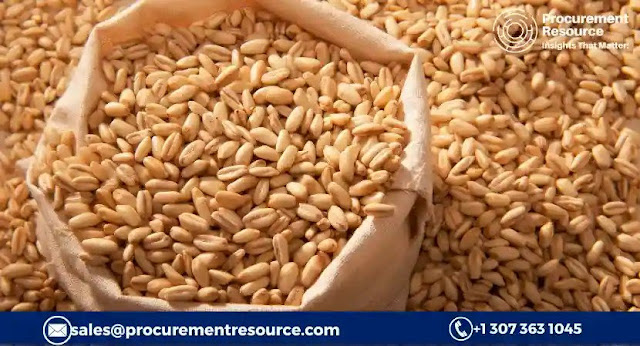Exploring Feed Barley Prices: Trends, Forecasts, and Global Market Dynamics
Welcome to a comprehensive analysis of the feed barley market, offering the latest insights on price movements and trend analysis across various regions globally. In this article, we delve into the dynamics, trends, and forecasts influencing feed barley prices in different regions, including Asia, Europe, North America, Latin America, and the Middle East & Africa.
Request for Real-Time Feed Barley Prices: https://www.procurementresource.com/resource-center/feed-barley-price-trends/pricerequest
Market Dynamics and Outlook:
Definition of Feed Barley: Feed barley refers to a type of barley primarily utilized in animal feed production due to its nutritional value. It's a vital component in the diets of livestock, including poultry, cattle, and pigs, offering a cost-effective source of essential nutrients.
Key Details About the Feed Barley Price Trend:
Understanding the price trend of feed barley involves a multitude of factors. These include but are not limited to:
Supply and Demand: The balance between the supply of feed barley and the demand from various industries significantly impacts its price. Factors such as weather conditions, harvest yields, and global consumption patterns play a pivotal role in determining the price trend.
Global Economic Conditions: Economic factors like exchange rates, trade policies, and overall market stability influence the price of feed barley. Fluctuations in these conditions can impact international trade and subsequently affect prices.
Seasonal Variations: The seasonality of barley production and consumption can cause price fluctuations. For instance, the harvest season in different regions can lead to temporary fluctuations in prices based on the availability of fresh supply.
Geopolitical Factors: Political instability, trade conflicts, or government regulations in major barley-producing or consuming regions can affect market dynamics and, consequently, the price trend.
Industrial Uses Impacting the Feed Barley Price Trend:
Apart from being a critical component in animal feed, feed barley has several industrial uses that influence its pricing:
Brewing Industry: Barley is a primary ingredient in brewing. Changes in the brewing industry, such as shifts in demand for different types of barley, can impact feed barley prices.
Food Industry: Barley is also used in various food products, including soups, stews, and bread. Changes in consumer preferences or dietary trends can impact the demand and price of feed barley.
Biofuel Production: Barley can be used in the production of biofuels. Any shifts in the energy market or policies promoting biofuel production can influence the demand and subsequently the price of feed barley.
Key Players:
Several key players impact the feed barley market globally. These include:
Agricultural Producers: Farmers and agricultural organizations involved in barley cultivation significantly influence the supply side of the market.
Trading and Distribution Companies: Companies involved in the trading and distribution of feed barley across different regions play a crucial role in setting prices based on market demand and supply dynamics.
Government Policies and Regulatory Bodies: Government policies related to agriculture, trade, and animal feed production have a direct impact on the feed barley market.
International Market Influencers: Global organizations, trade alliances, and international market influencers can also affect the prices of feed barley through their policies and market activities.
Conclusion:
The feed barley market is a complex ecosystem influenced by various factors, including supply and demand, economic conditions, industrial uses, and the actions of key players in the market. Understanding these dynamics is crucial for businesses, investors, and stakeholders involved in the feed barley industry. Stay tuned for more updates and in-depth analysis to navigate this dynamic market landscape effectively.
In conclusion, the feed barley market is a dynamic and multifaceted space influenced by numerous factors. Understanding these intricacies is crucial for businesses, investors, and stakeholders in the industry. Stay tuned for more updates and in-depth analysis to navigate this evolving market landscape effectively.
Remember, staying informed about global trends and local market conditions is key to making informed decisions in the feed barley market. If you have any questions or would like further insights, do not hesitate to reach out.
Disclaimer: This blog post provides general information and analysis regarding feed barley prices and
trends and should not be considered as financial or investment advice. Market conditions can change rapidly, and readers are encouraged to conduct their research or seek professional guidance before making any business decisions.



Comments
Post a Comment